The “Tales from Nick’s FARRP” series are a fictionalized version of real events and are dedicated to the memory of friends and classmates from the Class of 1969.
“So, Rod, what’s that horse thingy on your shoulder?”
* * * * * * *
I was speaking to an Army guy sitting on a stool in the bar that I had recently inherited from my late Uncle Nick. Nick’s FARRP is the name my uncle gave the bar he bought after he had to leave the Army. They retired him because of cancers he got from several combat tours in Vietnam, where he was a helicopter pilot. Knowing nothing about the Army, I am always asking the Army guys who come in here questions, which they patiently explain to me. “Rod” was Chief Warrant Officer Rod Jordan, who had been best buddies with my Uncle Nick, along with the late husband of Miss Peggy, my bar manager and guardian angel.
* * * * *
“Well, New Guy,” Chief Rod began. My name is really Gil Edwards, but by now I knew that “New Guy” was his affectionate name for me. “That is the shoulder patch of the Army’s First Cavalry Division. It is the largest unit patch in the Army, and its bright yellow shield shape makes it the most recognizable patch as well. The black slash represents the cav saber, and the horse silhouette speaks for itself. The guys who wear it proudly call it the ‘horse blanket.’”
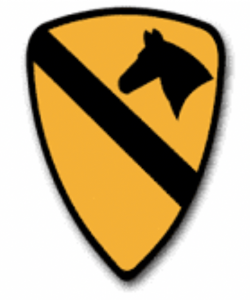
“So, what’s so great about the First Cavalry Division?” I asked.
“Okay, New Guy,” replied Chief Rod. “Are you ready for a history lesson?”
When I nodded, he continued. “Back in 1964, before Vietnam really started heating up, the Army created an experimental division, the first major combat unit with their own helicopters, hundreds of them. They called it the ‘airmobile division,’ and it was intended to begin a new era of Army combat mobility. In 1965 it was re-designated as the First Cavalry Division, a historic unit from World War II and Korea, and deployed as the first Army division sent to Vietnam.
“Your Uncle Nick, Miss Peggy’s late husband Mike and I deployed as aviators with the 1st Cav to Vietnam aboard ships in 1965. The three of us had already served a tour in Vietnam, flying H-21 helicopters supporting the Army of the Republic of Vietnam, what we called ‘ARVNs,’ right after we had graduated from flight school in 1962. We were young in ‘65, full of piss and vinegar, but at the age of 22 we were considered old combat veterans by the majority of the thousand or so aviators in the Cav who had never seen a shot fired in anger.
“Not only was our 1st Cav the first Army division deployed to Vietnam, but when Miss Peggy’s husband Mike was shot down and killed in June of 1972 on his third combat flying tour his Cav aerial rocket artillery unit, the ‘Blue Max,’ was the last Army division unit still in combat. The 1st Cav served as bookends for all the other major Army combat units throughout the Vietnam War, although some American advisors and aviation units were still in combat into 1973.”
“I can attest to that,” responded the tall guy sitting next to Chief Rod that I knew as Major Tony Williams. “To give the other guys in my assault helicopter company a break for the holidays, I volunteered to fly the only missions for those days. On Thanksgiving and Christmas days of 1972, plus New Year’s Day in ’73, I was the Aircraft Commander for the only helicopter flying on those holidays in the entire II Corps region. And on Christmas day an American advisor to a Vietnamese Army battalion played us holiday music over our FM radio while we flew. I logged 8.5 hours of direct combat support time on January 1, the last mission I flew in country before coming back.”
“Wow,” I replied. “I always heard the war was over by that time.”
“That’s what the American public thought,” spoke up Chief Rod, “because all the news organizations had packed up and gone home long before then.”
“Yeah,” replied Major Tony. “Nobody realized that there were more Korean troops in Vietnam by that time than there were Americans.”
“So why was an Army division called cavalry when they didn’t have horses?” I asked these guys.
Captain Kenny Wayne, sitting on the other side of Chief Rod from Major Tony, spoke up. “Back in the earlier years of this century, after Pancho Villa’s bandits began raiding our states along the Mexican border, the Army combined four of its cavalry regiments into a division to patrol and secure our border. They called it the First Cavalry Division. My daddy served in the 1st Cav at Fort Bliss, Texas, in the 1930s, when the Division had 12,000 men, 10,000 horses and 20,000 mules. He told me stories as a child about West Pointers he had known, in the Cav and later in World War II. One who impressed him particularly was a brand-new second lieutenant just assigned to the Cav in 1936, a short stocky kid named Creighton Abrams.”
Major Tony interrupted, setting down his beer. “Gil, for your civilian edification, the late General Creighton Abrams succeeded General Westmoreland as top commander in Vietnam, then served as the Army Chief of Staff.”
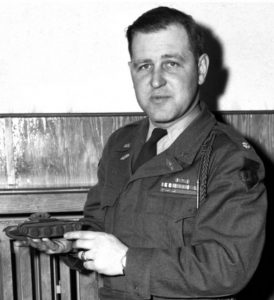
“Yeah,” resumed Captain Kenny, “my dad later served under Colonel Abrams in Combat Command B during the Battle of the Bulge. My dad’s stories are partly why I decided to go to West Point.”
“Resuming the history lesson, New Guy,” continued Chief Rod. “During World War II the Cav turned in their horses for jeeps and served as infantry in the Pacific. In retaking hundreds of islands in the Philippines during 1944 and 1945, the 1st Cavalry Division made more amphibious landings and put more men ashore than the entire United States Marine Corps in every theater of every war in our nation’s history.
“MacArthur loved the Cav and called them his ‘First Team.’ They were his first troops in Manila, first in Tokyo and first in Korea. Sadly, when they were occupation troops in Japan, they were severely under-manned, under-equipped, under-trained and poorly led. They got deployed directly into combat in Korea, where they did not perform well, and got over-run, losing their colors in disgrace.
“The new 1st Cavalry Division (Airmobile) saw their deployment to Vietnam in 1965 as the opportunity to regain their lost colors and restore their honor. Their baptism of fire at the Ia Drang Valley in November 1965, was the first major battle between US Army troops and the North Vietnamese Army in the war. Battalions of the 1st Cavalry Division, including 7th Cav, 5th Cav, 8th Cav, 12th Cav, 1-9th Air Cav and 8th Engineers and their supporting aviation units, took horrific losses in the Ia Drang. But, by golly, they won back the Cav’s colors with distinction. Thirty Cav troopers from the Vietnam War were awarded the Medal of Honor, known reverently as ‘The Medal.’”
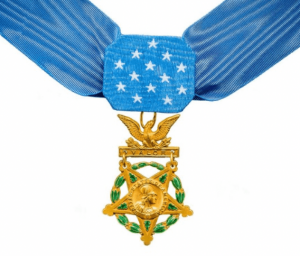
“And those 1st Cav guys were sure proud of that ‘horse blanket, ‘” said Major Tony. “Everywhere you went in Vietnam you could see the Cav patch painted on any flat surface that wasn’t alive. They went crazy, painting their patch everywhere they ever went in country.”
Captain Kenny spoke up. “After the Vietnam War drew down, the 1st Cavalry Division was relocated to Fort Hood in Central Texas, where it became the experimental test bed for every crazy idea the Army had. When I served there after my Engineer Advanced Course, the Cav was called the TRICAP (“triple capability”) Division. The first brigade was armored, with two tank battalions and one mechanized battalion. The second brigade was the Air Cav Combat Brigade (ACCB), with an Air Cav Squadron, an Assault Helicopter battalion, and an Attack Helicopter Battalion. The third brigade was an airmobile infantry brigade, with three light infantry battalions. The division also had operational control over Alpha Company, 75th Infantry [Merrill’s Marauders, the Ranger Long Range Recon patrollers], and some supporting military intelligence units.
“In those days, the Division was a kaleidoscope of colors, with each unit authorized to wear their own distinctive headgear. The ACCB guys strutted around with their black Stetson hats and spurs when they weren’t flying. The armor guys in first brigade wore black berets. The infantry guys in Third brigade wore light blue berets, except for the 2-7th Cav guys, who wore camouflage patrol caps with two reflective stripes on the back. The field artillery units wore red berets, and the Division Support units wore Kelly green berets. Although lighter in hue than the Special Forces green berets, they still pissed off the flash-qualified guys who thought non-SF personnel should never wear a beret that is any sort of green.
The 8th Engineer Battalion, my unit known as ‘Skybeavers,’ wore red baseball caps, and the signal battalion wore orange baseball caps. Division staff wore yellow baseball caps and the Rangers wore black. Sure was colorful.
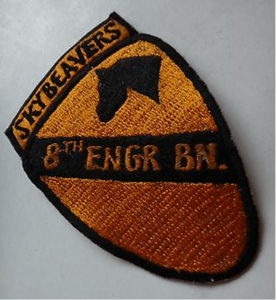
“And the Army was trying all sorts of crazy ideas. We had a dune buggy platoon, and scouts mounted on 250cc dirt bikes, air-delivered on special racks mounted on the skids of Hueys.
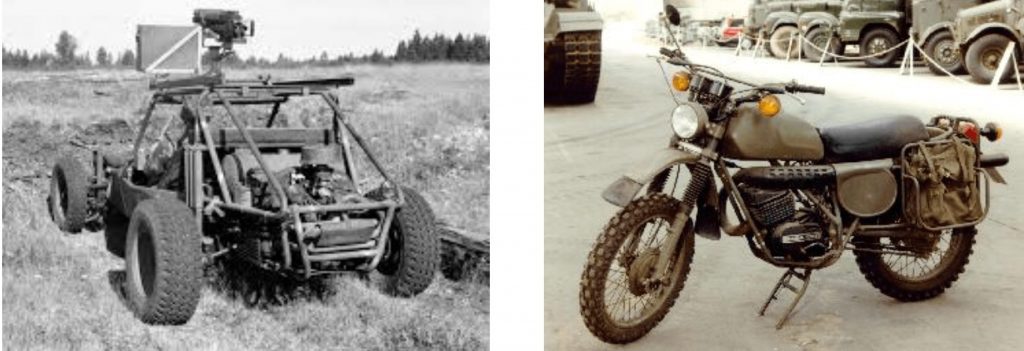
We were experimenting with ground-surveillance radars and unattended ground sensors, small seismic detectors to report foot or vehicle traffic.
“There was a self-propelled 155mm howitzer battalion to support the armored brigade, and air-transportable 105mm howitzers to support the third “Grey Wolf” brigade. Our engineer battalion had two armored engineer companies and two airmobile engineer companies for direct support of the brigades. It was a really exciting time to be in the Cav.
“A few years later the division converted again into a conventional armor division. But all the battalions retained their designation as units of the 5th, 7th, 8th and 12th cavalry, the historic horse regiments that formed up the division back in the 1920s. Exception was the 1-9th Cav, the Army’s original Air Cavalry squadron, which retained their designation as ‘Buffalo Soldiers.’”
“And Tony, you mentioned how they painted the Cav patch everywhere they ever went,” continued Captain Kenny. “While I was in the 1st Cav at Fort Hood, they even painted a 30-foot-tall Cav patch on the town water tank next to my house in Copperas Cove, Texas. You could see it for miles, all the way to Lampassas County. They sure are proud of their horse blanket.
“There’s a reason for that,” Kenny added with a grin. “Serving in the Cav, I learned that the official logistics deployment package for the division includes 20,000 gallons of yellow paint and 5,000 gallons of black!”
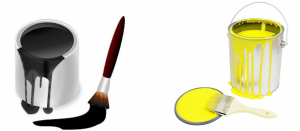
In memory of Bill and Terry and Eddie and Jerry
Great history of a great division.
Well done, and thanks Guy.
Tip of the hat to you, Guy!
Guy, good job stirring up 1st Cav trouble and greeting from your classmate (and my best friend from high school), Ray (Fuzzy) Dupere!
Chris Rodrigues
BS (‘69), MS (‘75) ChE Clemson
1/319 FA, 82nd ABN DIV
3rd Bde (Sep), 1st Cav Div (Ambl), RVN
Great story, Guy, and Gerry Owen!
Guy – – Great history. The 1st Cav Div was previously the 11th Air Assault Div. When the 1st Cav deployed to RVN it had an airborne-parachute brigade.
More importantly: If you inherited a “bar”, where was it and what happened to it.??
Sounds like you could turn this tale into a soap opera as told by Miss Peggy and a coterie of hangers on…….
Karl —
This piece is episode #7 among a dozen already posted on THEDAYSFORWARD.com. In the other episodes I remarked in the introduction that Nick’s FARRP is located in Fayetteville, NC, just outside Fort Bragg. In actual fact, I pictured it on Yadkin Rd, near Cottonade, but that detail would mean nothing to anyone.
The Days Forward Team picked this episode to reprint, in honor of the centennial birthday of the First Cavalry Division. Look up the NICK’S FARRP series on TDF and read the entire series. More episodes are in Suzanne’s inbox, so stay tuned.
I invented these diverse characters to be able to tell these stories from the post-Vietnam days, with authenticity. Although the presentation is fictionalized, every story is the absolute truth. Either I was there, or it was told to me by someone who was.
— guy
Great story, as always.
Brought back memories of Fort Hood when Donna and I were stationed at Fort Hood with the 2AD.
I remember well the colored headgear worn by the Cavalry Division…and it’s consequent nickname of “The Flying Rainbow”!!
TOM
Guy, great story as always. One thing I remember about the 1st Cav is that by the time we graduated it was truly an honorable unit. As Plebes we learned about the Ia Drang Valley battles and became quite familiar with the big yellow patch.
Ray —
The three fabled divisions by the time we graduated were the 82nd Airborne, 101st Airborne [Airmobile], and the FIRST CAV. I only served in two of them. In Vietnam the big yellow horse blanket was painted on everything.
In the Ia Drang the Cav was desperate to win back the colors they had lost in Korea. Went on to be awarded more Medals of Honor than any other Army or Marine division. THE FIRST TEAM.
— guy